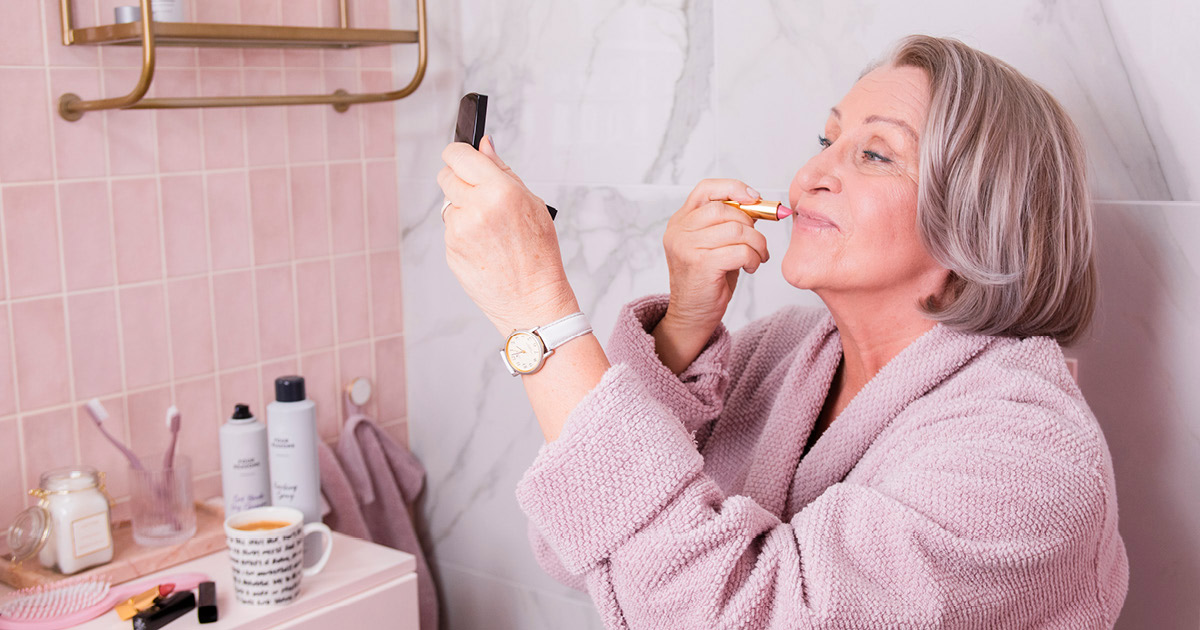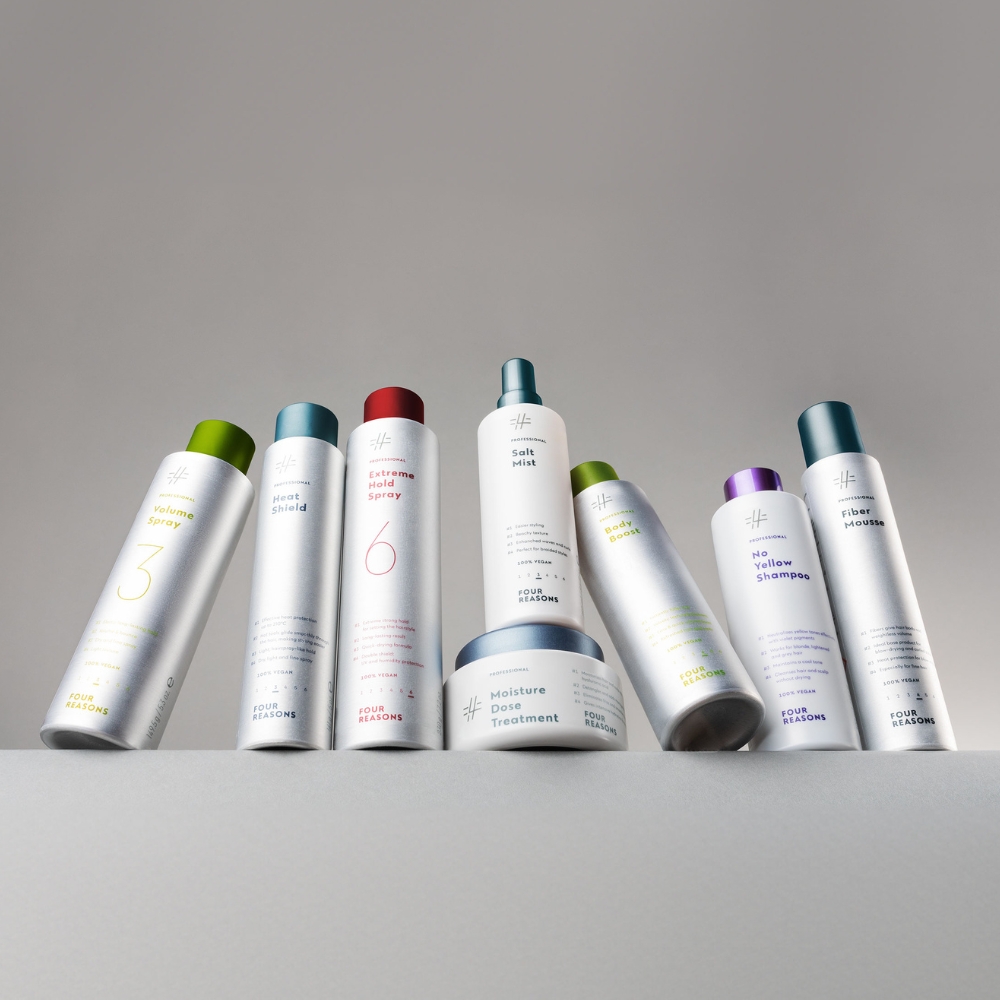Grey Hair: Nature’s own way of reminding us of the years accumulating or the real spice of life? If the client doesn’t want to show the famous “signs of wisdom” or strut their stuff as a silver fox, greys can be covered with fabulous shades while understanding the hair! Whether you’re a grey hair guru or a beginner, Four Reasons’ Product Development Director Harri shares tips and tricks for handling grey hair.

It all starts with analysis: assess the amount of grey
Before even considering taking out the recipe book, look at a small area to see how much grey is visible. The amount of grey varies surprisingly: for example, the front can be 100 % grey, while the back can have significantly less. Remember, if your client has 50 % greys, the natural base warmth affects the color choice!
Harri’s tip: don’t cover the entire hair with the same color, but shade the darker area with a darker shade and use a lighter color in already light areas. This way, you give the client multi-tonality, and grey hairs don’t push strong root growth as they grow.
Challenges of Grey Coverage
When greys don’t cover, there are usually two types of problems:
- The whole root looks lighter than the length and tips.
In this problem, analysis is essential! What do the length and tip really look like? Determining the degree of darkness can easily go wrong, as there can actually be a significant difference between the overall appearance and the root color.
Tip: The degree of darkness should be looked close to the root and dyed according to the darkest spot. - Individual greys are still visible after cover attempt
In this problem, pay special attention to the amount of mass and the application technique. Sometimes greys are so different in structure that they really need to be pushed properly into the color mass, so they don’t float above the color. Also, make sure that the color mass applied to the root does not move away from the root.
Tip: Extend the exposure time! Grey hair may need more exposure time – even 40-45 minutes instead of the usual 30-35 minutes. This increases both depth and intensity!
Dyeing with Optima
The ammonia-free Four Reasons Optima color has three separate Cover shades that cover greys 100% – the idea of Optima is to get a beautiful, even result easily and reliably. Cover shades have cool, neutral, and warm browns, which already have the brownness needed for grey coverage mixed in. This means that Optima does not have a basic series, but it has precisely the brown shades intended for grey coverage.
Optima color is ethanolamide-based, so the exposure time and sufficient mass amount are crucial: the hair should not shine through the color mass. Do you see hair with color mass or color mass with hair? The latter is the right way!
Optima is ammonia-free, that’s clear! But it also means that Optima’s alkalinity is low. Use Optima Clear Booster as a booster, which enhances the hair color’s coverage in resistant hair. Optima’s ethanolamide also needs more oxygen to penetrate the hair, so in normal grey coverage, a 6% oxidant may be a better option.
If a quick root dyeing is tempting, fragrance-free Optima Total is specially designed for root dyeing, a 100% grey coverage guaranteeing color product. A short exposure time makes Optima Total many hairdressers’ trusted product: results are produced in just ten minutes. The rich and well-spreading color smoothens work, and the result is naturally beautiful hair. Optima Total includes covering, neutral basic shades, and Optima Total mixing shades, with which you can turn basic colors either cooler or warmer.
Mix Optima Total color with Optima Total Activator 8% oxidant!
Tip: With Optima Clear Booster, you can bleach already bleached hair and brighten the tip!
Grey Coverage with Luxima
Four Reasons Luxima is the perfect option when you want to fade the grey from the base! Luxima’s Base shades are developed for grey coverage, and you can easily deepen untreated hair. You can use Base shades among other colors or as they are. The advantage of Base shades is that even though greys are covered when dyed, the shade fades gradually without a clear root growth limit, so hair treatment next time is easier.
Luxima hair color is ammonia-free and completely vegan. Low-alkaline Luxima dyeing is gentle – the hair’s natural base does not bleach, and the base’s warmth does not affect the result. You can also play a lot with the recipe ratios! Use, for example, half Base shade and half colored shades. If there are more greys, the recipe can be molded so that there is 2/3 Base shade and 1/3 shade!
Tip: Remember, untreated hair vs. pigmented hair dyes differently, so the result also looks different!


